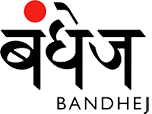
HANDCRAFTED, Sustainable Fashion
Currency

DHAMADKA:
Collaborating with Mohammadbhai Siddhikbhai

Mohammadbhai Siddikbhai from Dhamadka has been one of the most famous Ajrakh printers in Kutch. By the 1980s, Mohammadbhai was invited to many national and international museums and craft exhibitions to demonstrate his skills and the process of block printing. Many designers and scholars in the field of textiles started visiting him to study the traditional ways of printing. He realised that people from the outside world came to his doorstep only because of his knowledge of the craft, and it made him aware of the importance of his own rich tradition.
He had great vision and was wise enough to teach his young sons, Rajak, Ismail and Jabbar about the traditional ways of production. He was keen that his sons should learn the skills of his forefathers, and was convinced that, sometime in the future, his craft would be appreciated and also realised that visitors would come calling only if he continued with the age old processes, but with innovations in design.
I have had a close association with his family since 1977, when as a student of NID, I was sent with my senior Sulekha to live and work with Mohammadbhai for two weeks, to study and document their textile craft and, based on this, design a collection of block prints for the Gurjari stores. Until then, the printers printed fabrics only for the local rural communities. We were among the first outsiders who had reached this village to work with a printer to produce textiles for an alternative market. Our collection of prints were greatly appreciated, and from then onwards the family received regular orders from Gurjari. This changed their financial situation. Our stay in Dhamadka was an enriching experience, and became the basis for my future work in this area.

When I started Bandhej in the early eighties, I returned to Dhamadka to collaborate with Mohammadbhai to create textile for my store. I was impressed by their traditional designs, which were a variety of stripes, dots and geometric patterns. I developed a range of textiles using the existing blocks but with different placements, creating a variety of engineered prints. I would visit the village every few months and spend a couple of days working with the printers to plan new layouts to create new surfaces.
In many ways I consider Mohammadbhai my mentor, and through my many interactions with him, I have been able to develop a deeper understanding of the traditions associated with the craft. He taught me that there was more to craft than just skills, and introduced me to the joy of exploring new dimensions beyond technique and process by helping me connect with myths and stories, adding depth to my understanding of the craft sector. He greatly influenced the development of my interest in our oral tradition.

I learnt a lot from his inherent wisdom and observing him understood that work can become a pleasurable way of life. Mohammadbhai passed away in 1999 and his sons and grandsons continue the tradition. Today good quality Ajrakh printing in Kutch has become synonymous with the Mohammadbhai Siddikbhai family. His sons and grandsons have individually gained national and international recognition.










